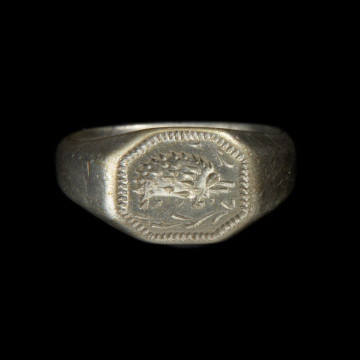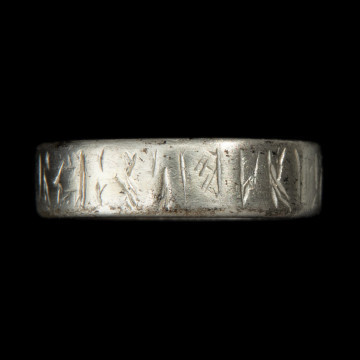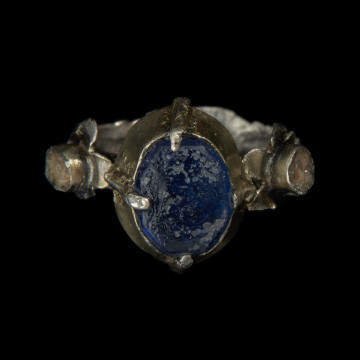
Signet ring with hedgehog
przełom XIV i XV wieku
National Museum in Szczecin
Part of the collections: Craft and industry products of Szczecin, Szczecin that is no longer
Gustav Fabricius (1880-1960), German civil engineer and later Szczecin building councillor, studied engineering at the polytechnics in Berlin and Gdansk. After graduating, he passed the government exam to become a master builder and soon left for German East Africa to set up a cement factory there. During the First World War he served as a soldier in the engineering forces. In 1916, he began working in Szczecin as a city planning officer and later as head of shipping, trade and industry in the city service. In 1923, he became a member of the board of directors of Stettiner Hafengesellschaft mbH and a member of the board of directors of Flughafen Stettin GmbH. He designed a hangar for hydroplanes landing on the lake and a grass-covered apron airfield in the Dąbie area – a facility considered one of the most modern in the city. He was a member of the board of the German Airports Association. He was awarded an honorary doctorate by the Technische Hochschule Danzig. According to Szczecin's pre-war address books, Dr Fabricius lived at Brombergerstrasse 6 (Lelewel Street). Like most of the German population, the Fabricius family did not stay in Szczecin after the war. Although the circumstances of their departure are not known, they left some of their personal belongings in the city. Interestingly, they didn’t find their way into the Szczecin History Museum until 1986, after they were discovered in a metal box while digging foundations on the property at 8-9 Filaretów Street (Memellandstraße), about 100 m from the Fabricius house. Part of the find was also the presented silver platter with an engraved dedication, given to the city building councillor on the occasion of his 50th birthday by his colleagues from the Szczecin harbour society. After the Second World War, Dr Fabricius and his family settled in Mülheim an der Ruhr, North Rhine-Westphalia. Małgorzata Peszko
Author / creator
Object type
pedestal plate
Technique
casting, repoussage, engraving
Material
silver
Origin / acquisition method
legal transfer
Creation time / dating
Creation / finding place
Owner
Muzeum Narodowe w Szczecinie
Identification number
Location / status

przełom XIV i XV wieku
National Museum in Szczecin

przełom XIV i XV wieku
National Museum in Szczecin

National Museum in Szczecin
DISCOVER this TOPIC
National Museum in Szczecin
DISCOVER this PATH
Educational path